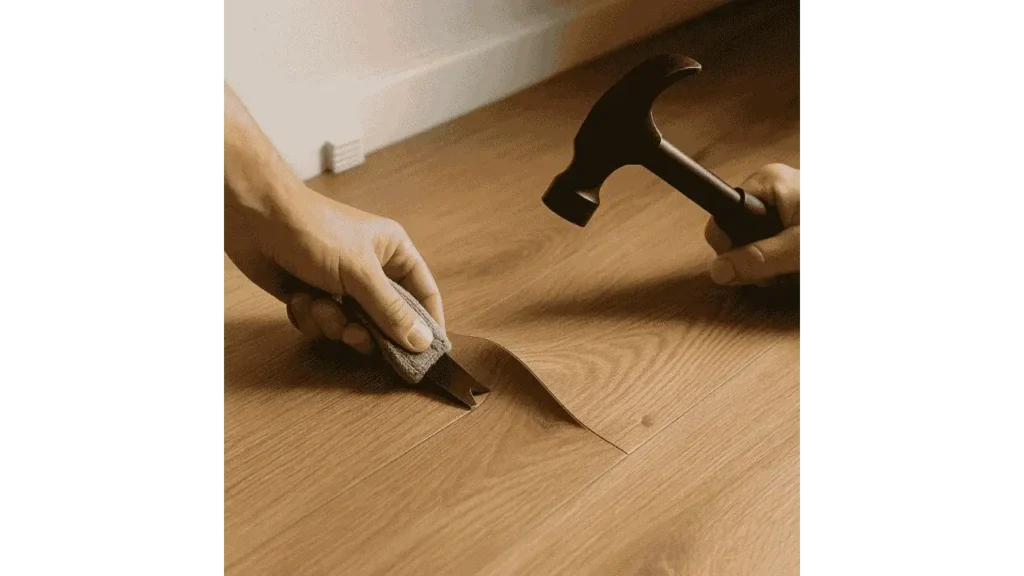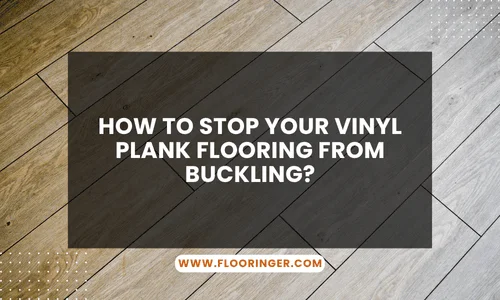Buckling in vinyl plank flooring happens when the planks lift, shift, or warp due to temperature changes, moisture, or installation issues. The best way to stop buckling is by identifying the root cause and taking corrective action early. Whether you’re dealing with heat, humidity, or subfloor problems, maintaining stable conditions and using proper installation techniques are key to keeping your floors flat and secure.

What Causes Buckling?
Sunlight & Heat
Direct exposure to sunlight can cause vinyl planks to expand and contract, especially in rooms with large windows or skylights. This constant expansion leads to lifted edges or warped boards. UV-blocking window film or thermal curtains can help reduce heat stress.
“Vinyl flooring is highly responsive to temperature shifts, so solar exposure must be controlled,” notes Alan Mendes, flooring specialist at WestFloors USA.
Moisture
Moisture is one of the biggest threats to vinyl plank flooring. It can seep underneath the planks and cause them to swell or lift. High humidity or accidental spills left unattended are often the culprits. Use moisture barriers during installation and avoid wet mopping.
“Trapped moisture is a silent destroyer for vinyl floors,” says Linda Kroll, certified installer with EuroPlank Interiors.
Dragging Heavy Objects Over Loose Lay Flooring
Loose lay vinyl isn’t glued down, so dragging furniture over it can displace the planks and lead to buckling. Always lift and place heavy items and use furniture pads to reduce surface stress. This helps prevent movement that causes gaps or lifted edges.
Read More: What Are the Disadvantages of Vinyl Plank Flooring?
Not Allowing for a Perimeter
Vinyl needs room to expand and contract. Failing to leave a 1/4-inch expansion gap around the perimeter can trap the flooring, causing it to push against walls and lift. This is a common mistake in DIY installations that leads to visible buckling over time.
Ways to Prevent Vinyl Plank Buckling
Using Proper Adhesive
For glue-down vinyl, using the right adhesive is crucial. Always follow the manufacturer’s adhesive recommendations. A strong bond prevents planks from lifting, especially in high-traffic or humid areas.
Rolling the Floor
Once the floor is installed, using a 100-lb floor roller ensures planks are properly pressed into place and helps eliminate air pockets that can lead to buckling later. This step is often skipped but makes a noticeable difference in long-term durability.
Sunlight and Window Treatments
To avoid overheating, install window coverings such as blinds or UV-protective films. These reduce the daily heat load on the floor and minimize the risk of expansion-related issues, especially in south-facing rooms.
Vinyl Plank Flooring Repairs
Making Repairs
If you spot minor buckling, you can remove the affected planks, clean the subfloor, and reapply adhesive or adjust the spacing. Make sure everything is clean and dry before putting the planks back to avoid trapping more moisture.
Replacing a Section
For more serious damage, replacement is the best option. Remove the warped section carefully and install new matching planks. Check that your replacement pieces match in color, texture, and locking system to maintain a seamless look.
Final Takeaways
To stop your vinyl plank flooring from buckling, maintain stable humidity levels, control sunlight exposure, and use proper installation practices like adhesive, rolling, and spacing. Most issues stem from moisture, heat, or movement, all of which can be prevented with small changes. When buckling does occur, minor repairs or section replacements can usually fix the problem without a full floor redo. Keeping up with basic care goes a long way in protecting your flooring investment.
